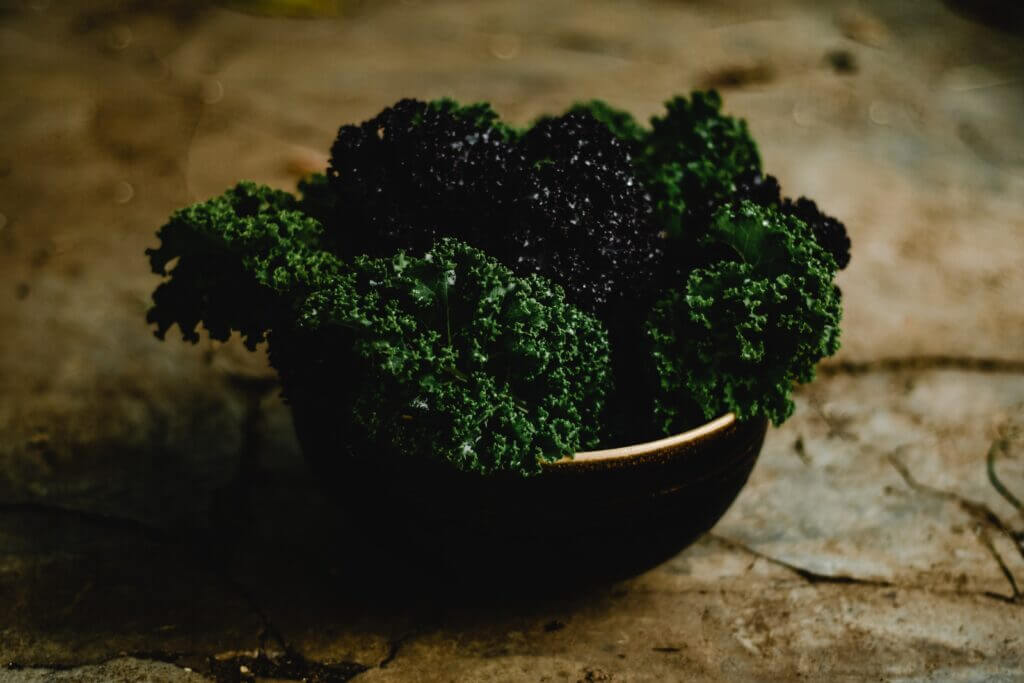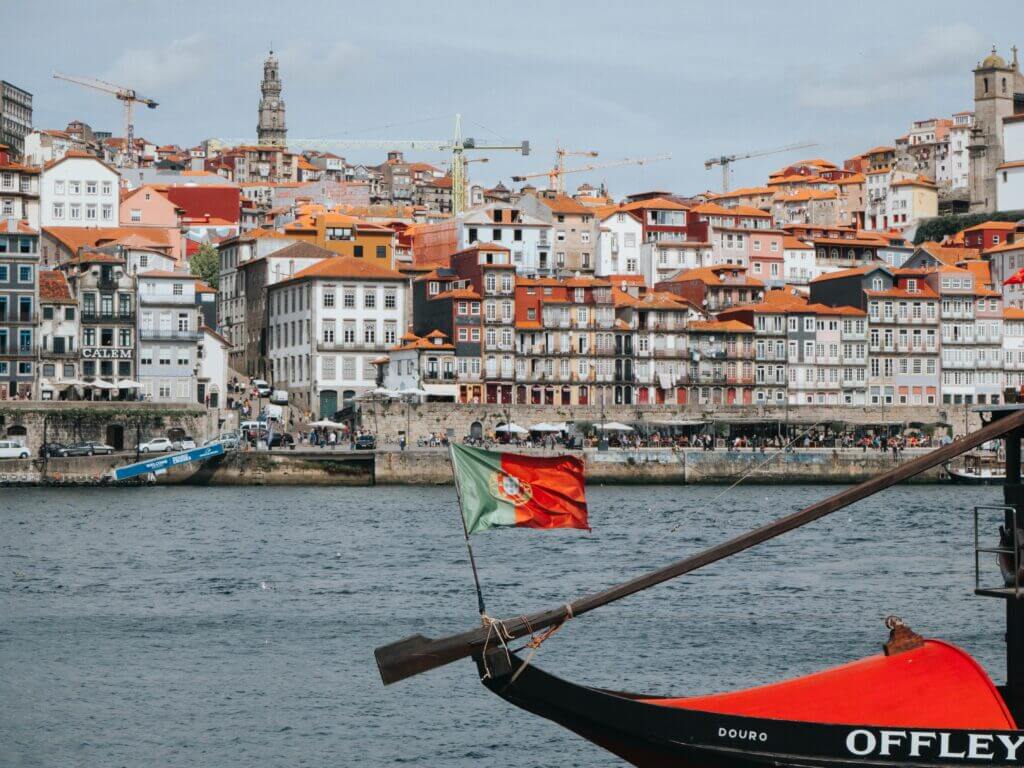Introduction
With a teeming gastronomical scene that’s rich in flavour as it is geography, there’s no better way to soak up Portugal than via its food.
Hungry? Feast your eyes on 5 traditional Portuguese foods right now.
Caldo Verde // Green Soup
Have you spotted packs of shredded cabbage in your local supermarket in Portugal and wondered what it’s for?
How to Make Caldo Verde
Simple yet tasty, Caldo Verde is a soup that combines chunky potatoes, carrots, and slices of cured meat in a broth. Cooked to softness with the potatoes, the sausage is removed and sliced later into the olive oil-infused liquid. Rich-green ribbons of cabbage are the final ingredient that give ‘green soup’ its famous name. It tastes divine with broa (corn bread) or pão de centeio (rye bread).
Where Caldo Verde is From
First slurped in Minho, an old region bordering Galicia, Caldo Verde is from northern Portugal but eaten across the country. Though every Tasca has its own secret recipe; the meat a surprise until it reaches your mouth. It’s an accompaniment to common festivities, like weddings and birthdays, and can be a light dinner or a first course.
Truly Eating Tip #1
Lisbon appears to be a hotspot for Caldo Verde. The top 3 recommendations are:
1) Tasco Chica
2) A Merendeira
3) 1300 Taberna
Frango Piri Piri // Spicy Chicken
I’ll never forget my first: the cool, plastic table; the platter of charred chicken buried in fries; the spice-roasted aroma. It still makes my mouth pool in envy. So what’s the story behind Piri Piri?
Piri Piri is Code for Chilli Pepper
Not to be confused with bell peppers, Piri Piri is a tiny pepper that packs a punch in teeny doses. Warning: overloading food with this lethal sauce might make your eyes stream.
Piri Piri is Not From Portugal
Personally, I’ve always assumed Piri Piri is traditional Portuguese food since eating it as a child in the Algarve.
So imagine my surprise when I realised that the Portuguese brought the capsicum plant from its native home – South and Central America – via Goa to the African colonies. Where in Mozambique and Angola, the chilli plant became a popular crop, eventually making its way into the Portuguese recipe.
Where to Eat Frango Piri Piri
Ask for ‘Frango Assado’ / ‘Frango Piri Piri’ in restaurants with their own in-house grill – found all over Portugal but chicken lovers go to Guia. You’ll get a plate of smoky, coal-grilled chicken pieces seasoned with secrets. Though the famous Algarve marinade includes chillies, salt, lemon juice, garlic and olive oil. You might try a different version when you’re in Lisbon. Side dishes include rice and/or chips, and a salad. Yum!
Truly Eating Tip #2
1) O Recife Churrasqueira, Faro
2) Restaurante Bonjardim, Lisbon
3) Restaurante Piri Piri, Trafaria
Sardinhas // Portuguese Sardines
There is no better way to taste summer in Portugal than eating grilled sardines. Visit the Lisbon or Setúbal regions in June and you’ll witness the Santos Populares festival, where throngs of super bock and fizzing barbecues, loaded with sardines, deck the streets.
Tinned Fish
Visit Lisbon or Porto and chances are you’ll find a colourful store dedicated to canned sardines called ‘the Fantastic World of Canned Sardines’. Truthfully, it’s an overpriced chain aimed at tourists.
But if you desire the novelty of canned food from another time, go to Conserveira de Lisboa on the cusp between Baixa Chiado and Alfama.
A family-run cannery, its story began in 1930 when canned food was part of a staple diet in Portugal, often enjoyed with a round of crusty bread. Despite the arrival of new trends like frozen food and hypermarkets, the shop survived. A portal into Lisbon before fast tourism and digital nomads, Conserveira de Lisboa is a special stop on your sardine itinerary.
Grilled Sardines
If you want to eat fresh grilled fish, march yourself to older neighbourhoods, Bairro Alto and Alfama, and order Sardines Grelhadas (Grilled Sardines). Served simple with boiled potatoes and a green salad, it’s an irresistible taste of the Atlantic.
How to Eat Sardines the Right Way
Most will warn you to look out for spindly bones, but from experience, the bitter aftertaste of guts is worse. If in doubt, eat around the belly. Although I use bread to sponge up the juices, others use theirs as ‘a makeshift plate’. This way, you won’t miss a drop!
Truly Eating Tip #3
1) Último Porto, Lisbon
2) Restaurante Zé Maria, Faro
3) Restaurante Srikaya, Setúbal
Bacalhau à Brás // Cod of Bras
The first Portuguese dish I ate during a visit to Lisbon, it’s a mishmash of fried potato matches, salted cod and egg drenched in olive oil. And one of those homely meals reserved for your avo’s kitchen.
Its History Starts with Salted Cod
Despite 1001-ish salted cod recipes in Portugal, you won’t find fresh cod anywhere else in the country. Its dried form a staple of Portuguese cuisine, from a time when curing was the only way to preserve fresh food.
Bacalhau became a firm favourite when the Portuguese realised it could feed fleets for 3-month-long voyages between Portugal and ‘new’ territories. Nowadays, it’s eaten most during Easter and Christmas celebrations.
How to Make Bacalhau à Brás
So how do you make this table favourite? Simply fried with potato straws in a good quality olive oil, balance your portions of salted cod and onion for the maximum flavour. Olives are essential. I’ve tried with whipped and sliced eggs but don’t go too crazy; switch your potatoes for rice and you’ll be shamed by the Portuguese nation. Season with parsely and taste!
Truly Eating Tip #4
The top 3 recommendations are:
1) Cantina 32, Porto
2) Casa do Bacalhau, Lisbon
3) Restaurante Laurinha, Lisbon
Francesinha // Little French Lady
Finish a whole Francescinha and you’ll join the Portuguese hall of fame in your respective friend group. More than a signature sandwich, the Francescina is loaded with linguiça (Portuguese sausage), salsicha (smoked sausage), cold-sliced ham, beef steak and cheese.
How to Make a Francescina (And the Sauce!)
Once stuffed between bread, the meat tower is buried in more cheese squares for a meltathon in the oven. But wait! It’s not ready yet. The sauce alone is made from a medley of spirits, Superbock beer, tomatoes and chilli (though each restaurant guards a secret recipe). It’s the finishing touch to a work of art. Serve with french fries and a fried egg, if you dare.
It’s One of the Most Famous Portuguese Dishes
The Francescina is a Porto special. Why?
Its maker, a Portuguese guy who’d lived in France, worked as a chef in Porto. He paid homage to his northern palette with a spin on the croque monsieur. And to solve this mouthful for Portuguese speakers, he dubbed it the ‘Francescina’.
Truly Eating Tip #5
The top 3 recommendations are:
1) Cafe Santiago, Porto
2) Restaurante Bufete Fase, Porto
3) A tripeiro’s kitchen (someone from Porto)
Portuguese Sandwiches // the Prego // the Bifana
National sandwiches eaten with pride, the Prego and Bifana are scrumptious on a budget. If you can, order at a traditional cafe.
How do you tell?
Look for bright plastic or white-wrapped tables in a simple setting, Super Bock and/or Sagres beers, and a TV screen showing a football game. The most obvious clue is the clients. If it’s buzzing with Portuguese people eating out, you’re in the right place.
What is a Prego Sandwich?
The Prego is a Portuguese steak sandwich made in a papo-seco (bread bun). A thick or thin cut depends on the chef, as do the sauce ingredients: some use white wine, others use beer, but always with garlic, spices and lots of butter. After the grilled steak is sizzled in a sauce till sticky, serve on a papa seco.
Prego Means Nail in Portuguese
Originally created by a tavern owner named ‘Prego’, at a time when pre-grill pounding to soften tough meat was ritual. Eventually, the name ‘nail’ stuck.
Nowadays, you can keep all your front teeth for as little as 2 euros.
What is a Bifana?
Once, in a no-frills bar in Estoi on a day when tarmac softened, I joined the lunchtime rush, including a rider (and his horse), to enjoy the bifana with a couple of imperials. And damn was it tasty.
Connected to Vendas Novas, in Alentejo, the Bifana is a typical Portuguese pork sandwich. Its secret? Fat, butter and never washing the pan for that heavenly flavour.
Made with fried pork in a bread bun, it tastes divine just as it is. Though in the Lisbon region, you’ll get mustard, mayonnaise or ketchup on the side. Its style depends on your location: while Southerners serve a sole-thin steak, pork is shredded up north.
Pair with a beer so fresco, it sticks to your palm.
Truly Eating Tip #6
1) Passion Cafe – Bifanas de Vendas Novas
2) Café Arco Iris, Setúbal
3) Carpintaria, Palmela
Conclusion
With traditional Portuguese foods widely available in Portugal, your foodie fix is within reach. But tradition will translate differently to who you meet and where you go on your travels.
My advice?
One-hundred-percent eat in AND beyond Lisbon/Porto. Because whether you dine on homemade Francescinas in Porto, munch on grilled sardines at a street party in Setúbal, or devour Frango Assado in a roadside cafe in Monchique, Portuguese gastronomy is best-explored place by place.
Which are your favourite traditional Portuguese dishes and where did you eat them? Share your experience below!



